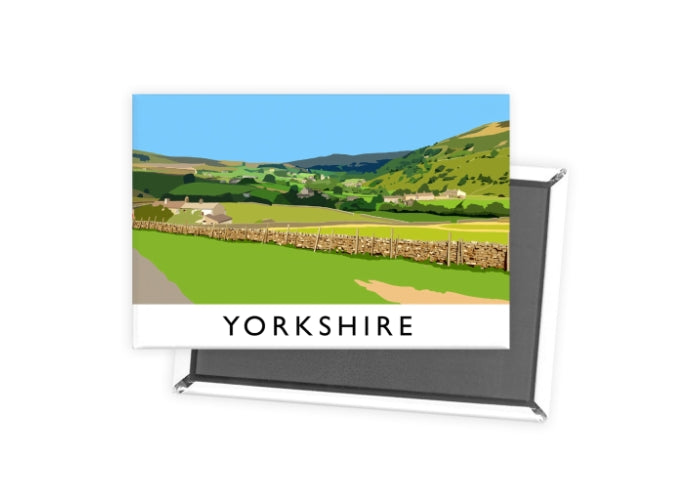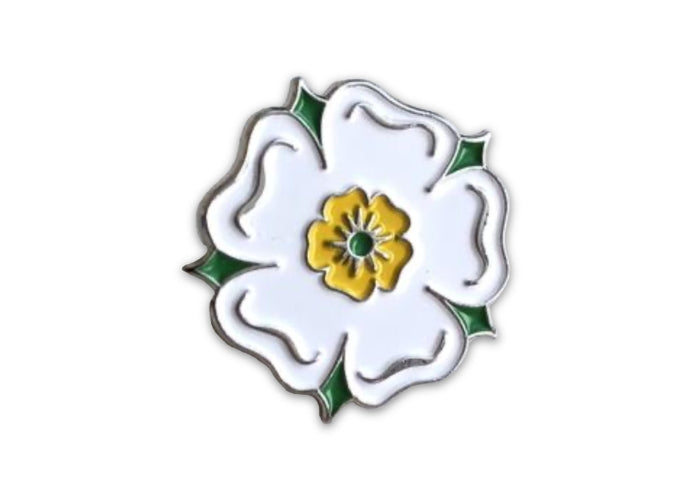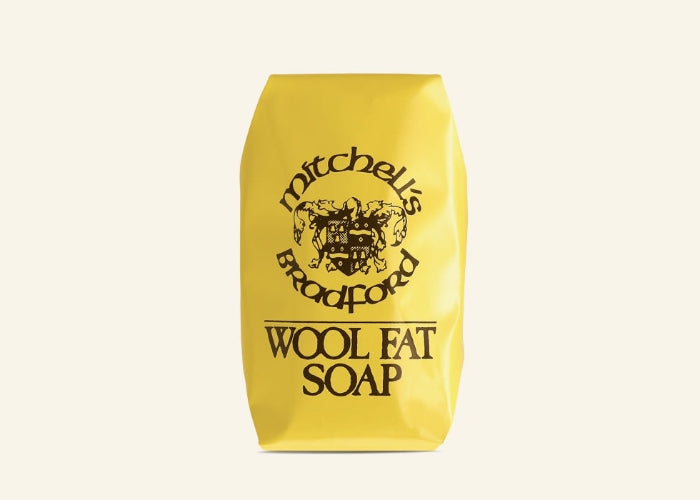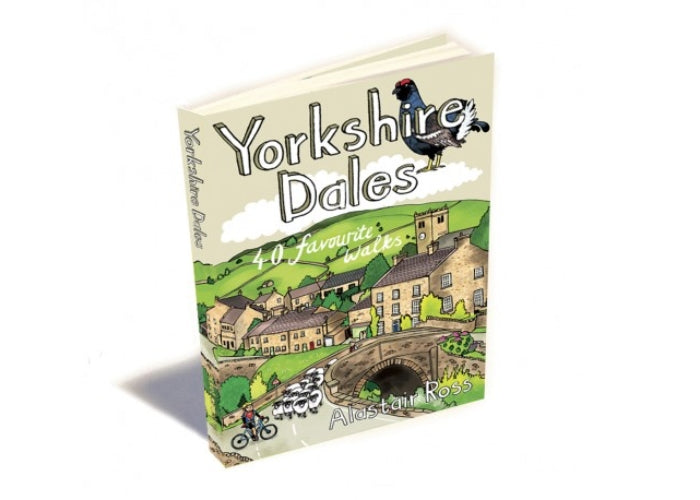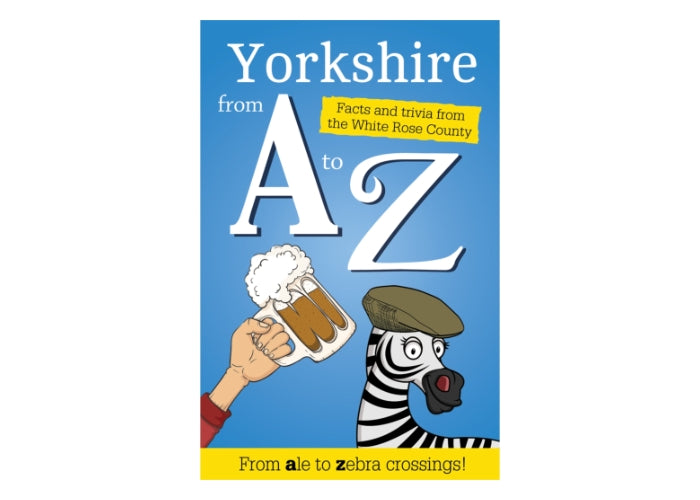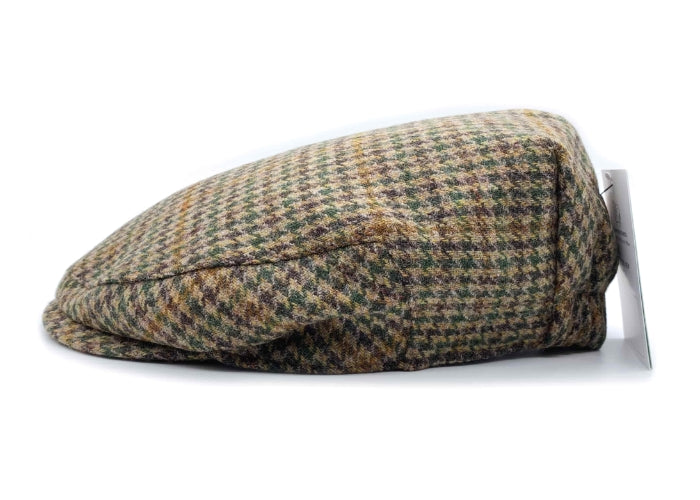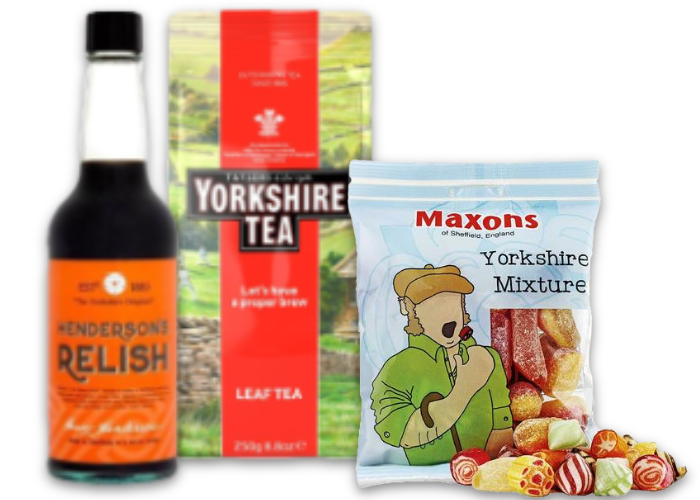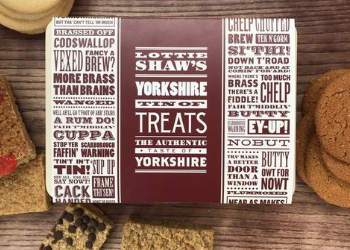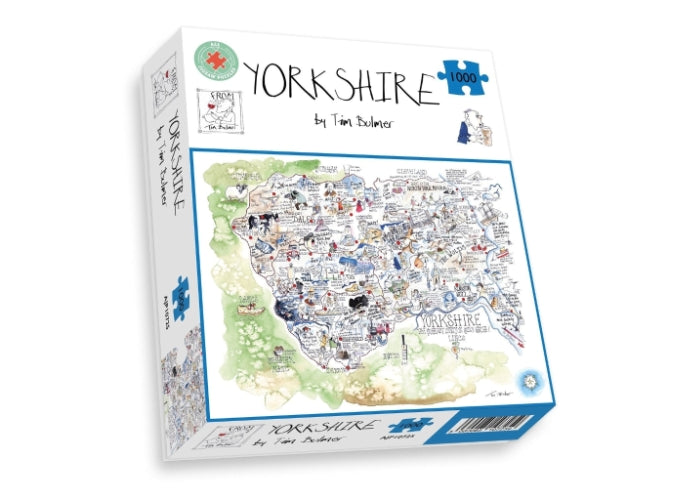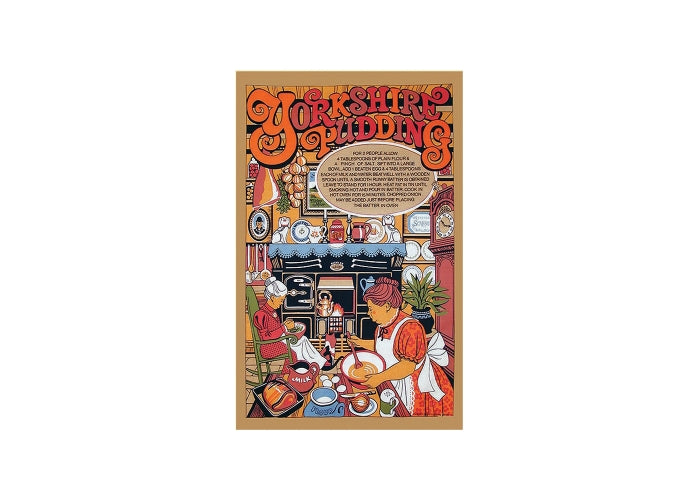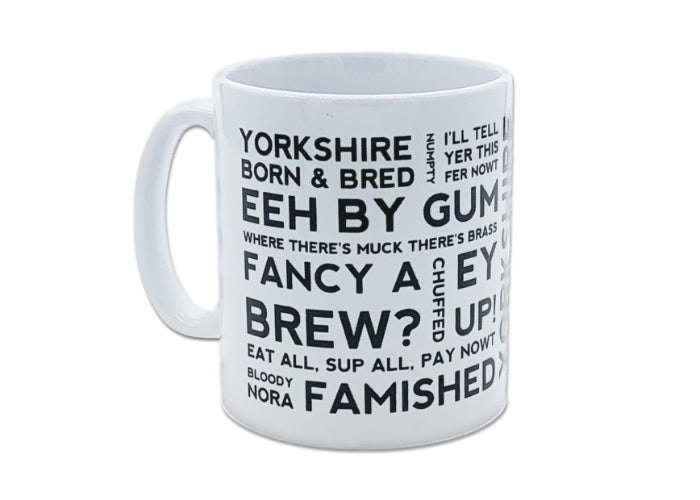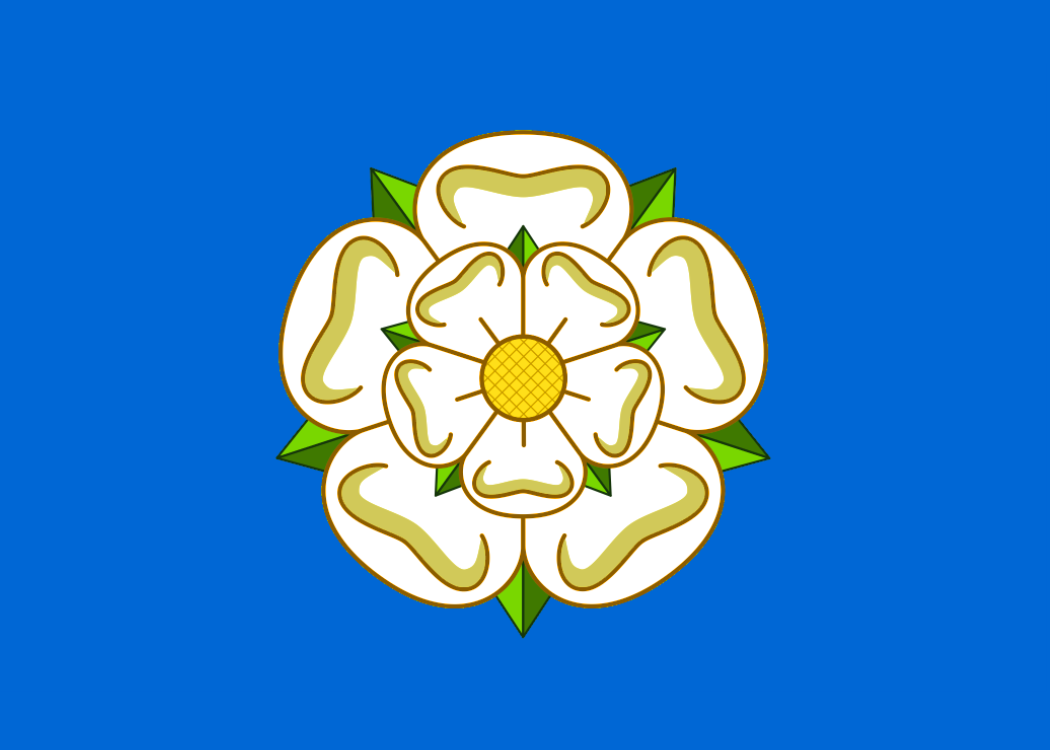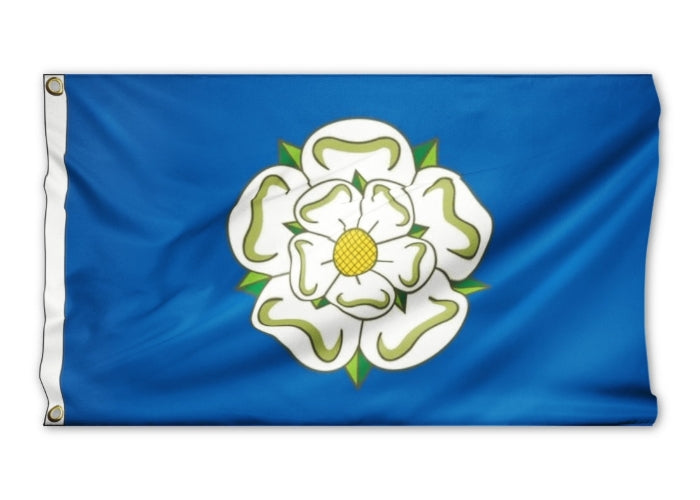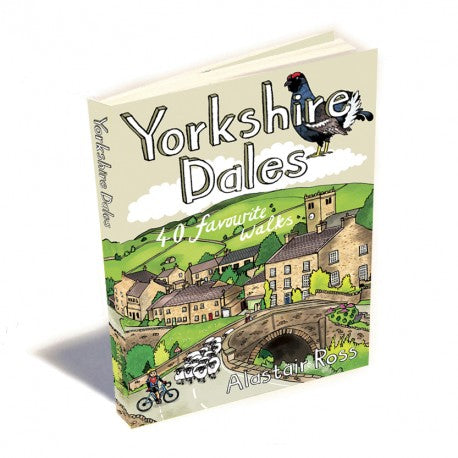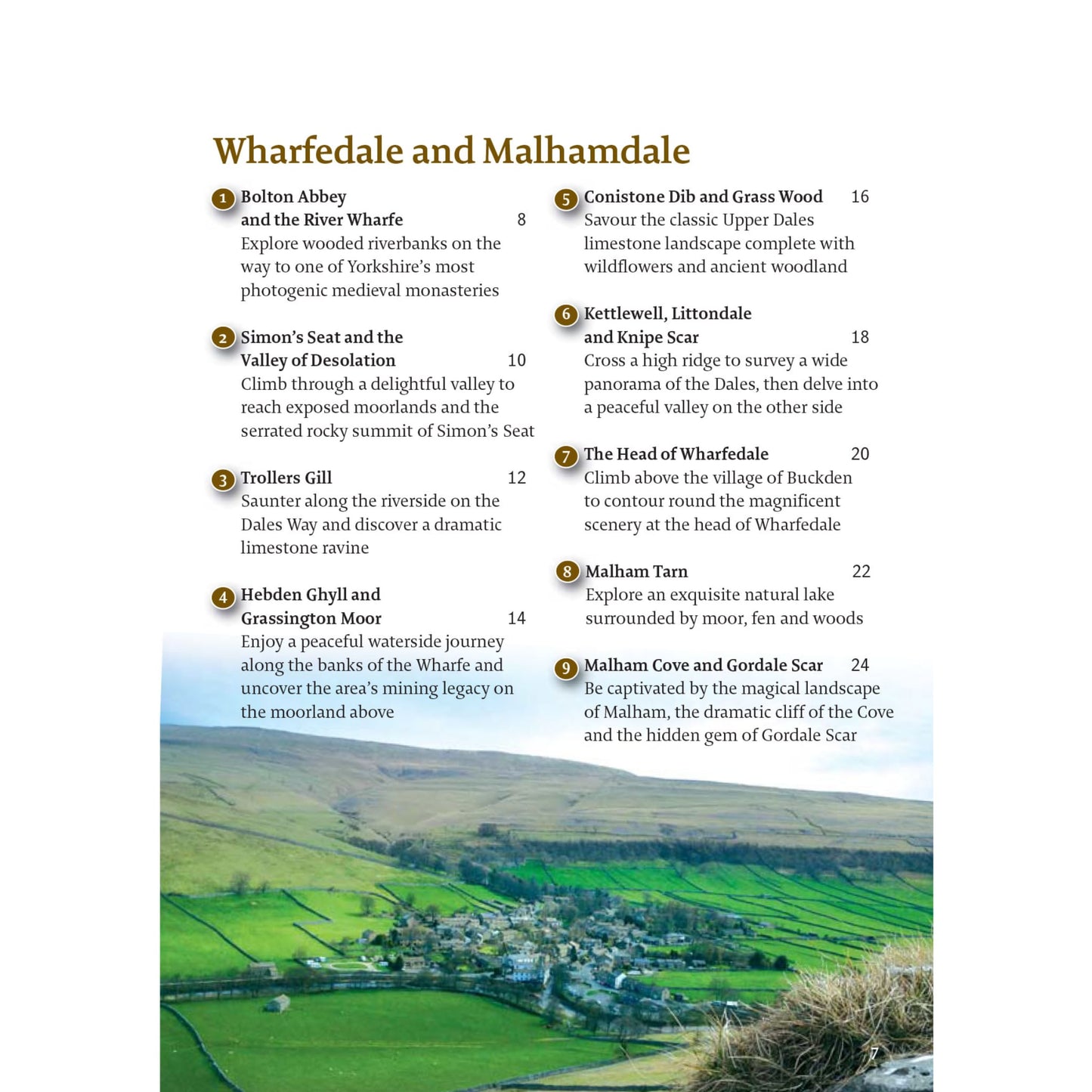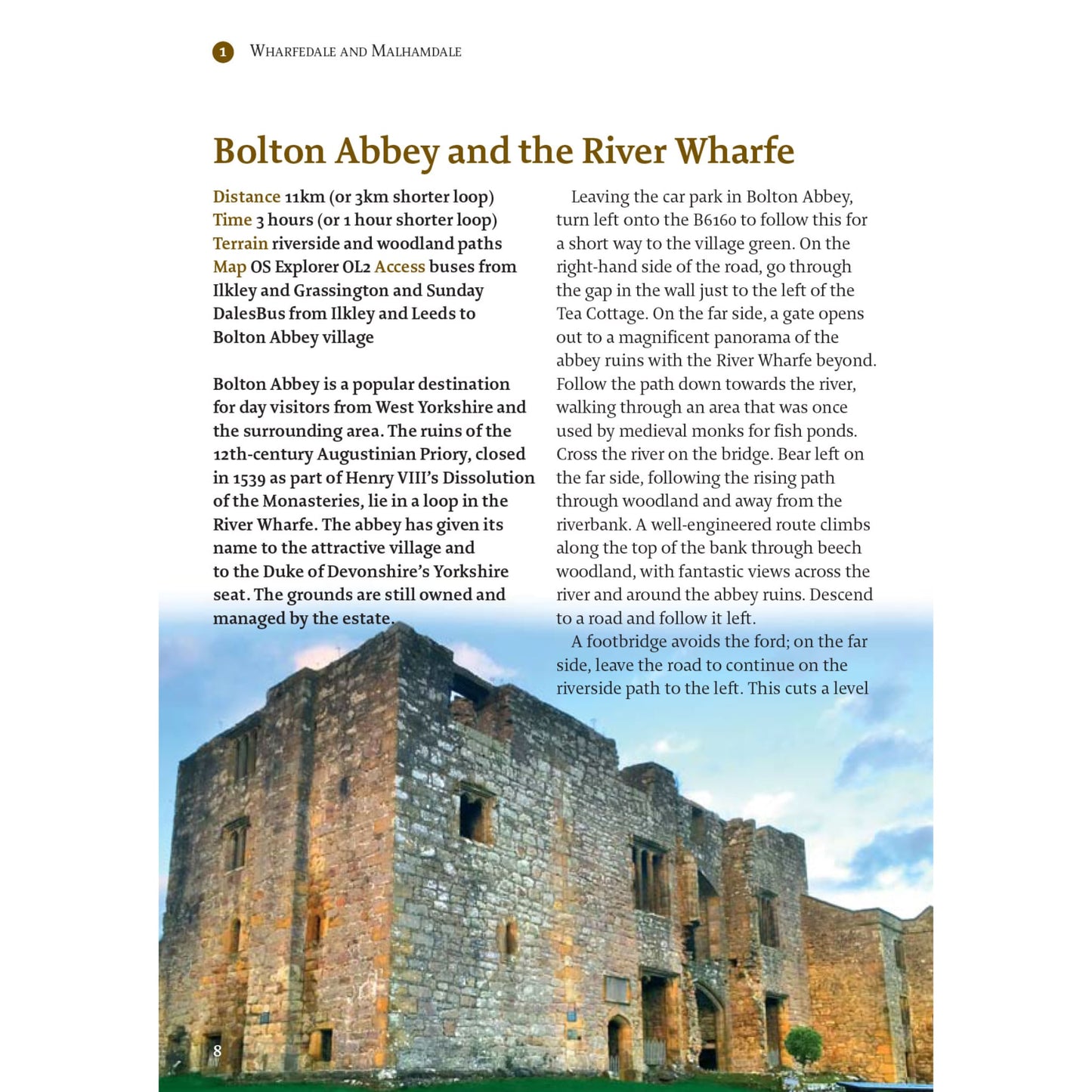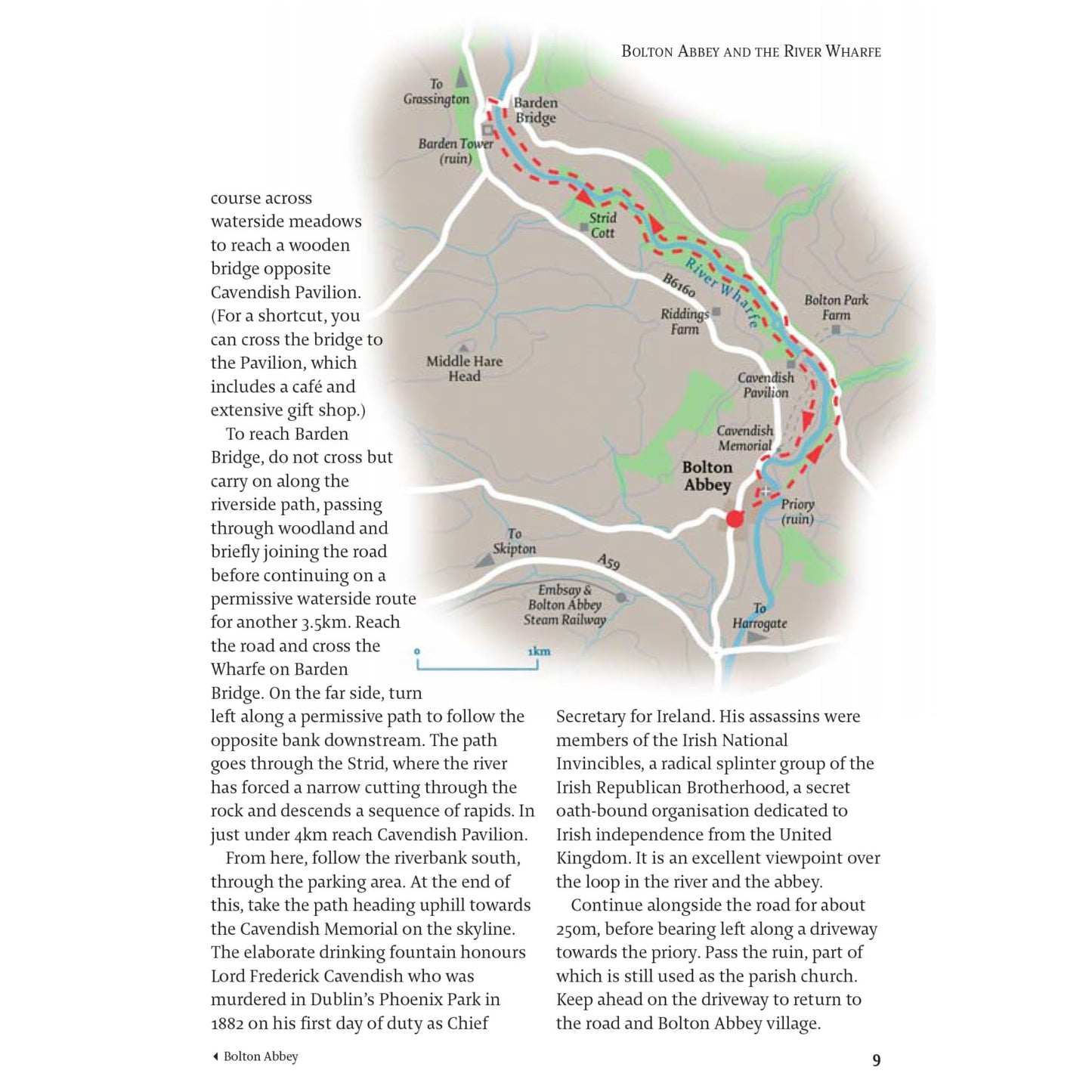The Yorkshire Dales combine a wild limestone landscape of high rolling moorland gouged by dramatic caves and cascading waterfalls with peaceful farmland carpeted in wildflowers and dotted with ruined abbeys, ancient stone walls and barns, and timeless villages waiting to be discovered.
The 40 moderate walks in this collection highlight the very best the area has to offer and include adventures in Wharfedale, Malhamdale, Nidderdale, Ribblesdale, Wensleydale, Swaledale and Dental. Many routes make use of sections of long-established trails such as the Pennine Way and the Dales Way.
Its base is encircled by remarkable limestone karst, with some of the best examples of ‘pavement’ in the British Isles, protected as a National Nature Reserve. Above this, the mountainside rises steeply up a series of sandstone and shale terraces, overlaid by heather and peat, where the Yoredale Series rocks predominate. The very highest section is a hardy cap of millstone grit, evident in Ingleborough’s iconic sloping plateau. Being permeable, limestone has also allowed water to gouge out potholes and caves, leaving dry valleys above. These are common throughout the Craven Dales. At Malham, for example, water now flowing underground once thundered over the great wall at the Cove. Nearby, one of the most extensive cavern systems in Europe connects Gaping Gill with Ingleborough Cave. Just south of here, the Craven Faults mark the southern edge of the Dales, running almost parallel to the A65. The Northern Dales are different in character. In Wensleydale and Swaledale, limestone is less evident, buried far below the surface, and shales and sandstones are more apparent. Where limestone is exposed it is of a different character. The long sinuous course of the Swale has carved a deep trench in the moorland, hiding woodland and small settlements, many originally Norse. It is here that the evidence of former lead mining is most readily seen in the haunting remains scattered across great swathes of moorland. These bear witness to the industrial importance and vitality of this area in the 18th and 19th centuries. Lead mining can be found elsewhere too, notably around Grassington, in Wharfedale and at Greenhow, above Nidderdale. Wensleydale has a very different terrain. Here the River Ure flows through more pastoral scenery, home to dairy farming and the eponymous Wensleydale cheese. To the west, the rounded, convex Howgill Fells are reminiscent of the Southern Uplands in Scotland. Only the southern section was originally included in the National Park, with the small and historic town of Sedbergh sitting at the foot of the hills. The National Park’s border excluded the northern uplands, which were located in the old county of Westmorland, running along the former county boundary and splicing the Howgills at their highest point, The Calf. In 2016, the Park was extended to include the northern section of the Howgills, as well as the limestone uplands around Orton and Kirkby Stephen. In total this covers well over 2000 sq km of land across the north of England.
The Historic Dales
There is evidence of early settlement in the Yorkshire Dales, with examples of stone circles and early dwellings such as Attermire Cave near Settle. The Romans built forts, including one at Ilkley in Lower Wharfedale, and drove roads across the hills in order to join the settlements and defend their territory. Their road across Stainmore, north of the Dales, is still a key route across the Pennines used by the A66 from Scotch Corner as far as Penrith. With the gradual disintegration of the Roman Empire, Angles, Danes and Vikings successively migrated into the area and the Anglo-Saxon Kingdoms of Deira and Northumbria emerged. The variety of place names indicates the eclectic origins of the people and traditions, with the Danish by and the Norse thwaite in common usage. The northern word ‘force’ derives from the Viking foss for ‘waterfall’. The Norman Conquest was hard on Yorkshire and it was subjugated savagely, though it was also subject to Scottish incursions from the north. But during this period monasteries also flourished and became an important foundation of trade and social care. Great communities such as Jervaulx Abbey were established. An extensive network of trade routes linked the Dales. Many of these survive as long-distance bridleways, such as the ‘Langstrothdale Road’ running north from Horton in Ribblesdale. Lead mining thrived in the Dales, though the development of major industrial cities took place further south in Yorkshire. With the decline of the industry, many people moved away, but the long-standing wool trade and the expansion of dairy farming retained commerce and activity in even the remotest corners of the region. Tourism is now also a key economic earner.
Walking the Dales
This is superlative walking country. The floor of the Dales is carpeted by wildflowers in season. Above this, most of the region is open and unencumbered by fences or restrictions. The characteristic stone walls are ubiquitous. Many are centenarians and some are a lot older. There is little in the way of agricultural crops, except for grass, but bear in mind that hay is a very important product for farmers and treat meadows with suitable respect and care. In limestone country the ground is soft and well drained, mostly short cropped through grazing. The higher areas offer fantastic views, in suitable weather! There are a number of long-distance footpaths in the Dales.
The most famous is the original one, the legendary Pennine Way, which runs through the length of the National Park from Gargrave in the south through Malham, Horton and Hawes to Keld, continuing beyond to the Scottish border. In contrast, the Dales Way is a gentler affair, heading from the conurbations of West Yorkshire to the Lake District via Wharfedale and Dentdale. Alongside these long-distance paths is a plethora of formal and less formal routes, such as the 85km Nidderdale Way or the Ribble Way, following the river from source to sea. One of the best known challenge routes is the 39km Three Peaks, joining Ingleborough, Pen-y-ghent and Whernside and involving more than 1500m of climbing. Aside from the official routes, there are miles and miles of trails, tracks and packhorse routes. It is not difficult to design your own. Generally the paths and tracks are very well signposted and maintained.
Although the Dales are not as obviously rugged as some other mountainous areas in the north of Britain, the challenge that tackling this terrain entails should not be underestimated. Much of this country is quite remote with extensive high, rocky ground. Mist can occur at any time of year and winters are relatively hard, with snow a ready possibility in winter months and at other times. Becks and rivers can swell and flood, making fording them difficult. Appropriate clothing and footwear is essential, together with the use of a map and compass or GPS. The maps in this volume give a broad overview of the route you are to follow, but you should also use detailed maps such as the OS Explorer series or those produced by Harvey Maps.
Public Transport
The remarkable Settle-Carlisle Railway bisects the Dales with a regular service between Leeds and Carlisle. All trains stop at Settle and Kirkby Stephen. Most also call at Horton in Ribblesdale, Ribblehead, Dent and Garsdale. Many of the walks start at or near these stations. Five trains a day run along the Bentham Line to Lancaster and Morecambe. For times visit northernrailway.co.uk. Bus services can change, but several routes are key arteries. Most have regular services all week and all year, though varying in frequency. A network of services is also organised by DalesBus on Sundays throughout the year and on Bank Holidays between Easter and August. These buses serve most areas of the Dales and routes start from West Yorkshire, East Lancashire, Teesside, York and Lancaster. Timetables and coverage vary between summer and winter. Details can be found at dalesbus.org.

